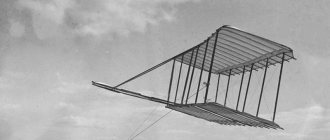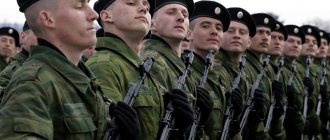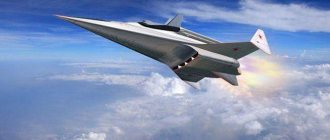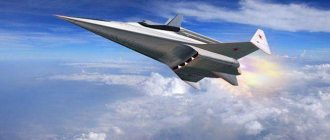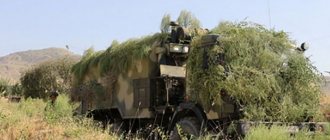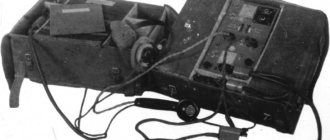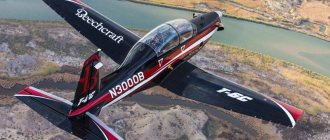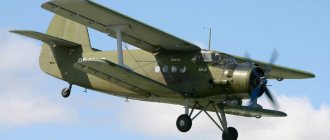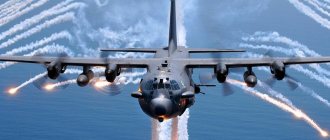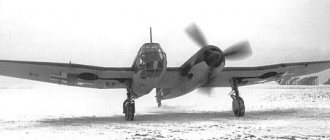In 1940, a delegation of Soviet aircraft designers visited the Third Reich. They were able to get acquainted with many samples of Luftwaffe combat aircraft, and even purchased some for further study. But only one sample aroused such interest that they wanted to not only study it, but completely copy it.
And it was not a fighter or bomber, but a light-engine reconnaissance aircraft "Storch", developed by. This aircraft had a number of unique features for its time that allowed it to become the best in its class and remain in production even after the war.
History of creation
In 1930, former fighter pilot Gerhard Fieseler founded a company named after himself, which began building sports aircraft. And already in 1934, the Tiger biplane of his design won the world aerobatics championship. And in 1935, Fieseler’s company was invited to participate in a competition announced by the Reich Ministry of Aviation.
As part of the competition, it was necessary to create a light aircraft capable of performing the functions of a reconnaissance aircraft, spotter and communications vehicle. By this time, Gerhard Fieseler's company was already producing light monoplanes with advanced wing mechanization, capable of flying at very low speeds and taking off with a minimum takeoff run.
As a result, the very next year, 1936, the plane, named “Storch” (“Stork”), made its first flight.
At the same time, competitors in the competition prepared their cars only in 1938, when the Fi.156 had already been put into production.
Literature
- Shtorkh, Andrey Karlovich // Encyclopedic Dictionary of Brockhaus and Efron: in 86 volumes (82 volumes and 4 additional). - St. Petersburg, 1890-1907.
- History of Russian economic thought, vol. 1, part 2. - M., 1958. - pp. 111-116
- Zdobnov N.V.
History of Russian bibliography before the beginning of the 20th century, 3rd ed. - M., 1955. - P. 144-147. - // Months and general staff of the Russian Empire for 1835. Part one. - St. Petersburg: Printing house at the Imperial Academy of Sciences, 1835. - P. 434.
- Pavlov V. A.
Statistician, bibliographer, political economist: About the scientist Andrei Karlovich (Heinrich Friedrich von) Storch (1766-1835) who stood at the origins of these disciplines in Russia // Moscow Journal. — 2016. — No. 4 (304). - P. 2-11.
Design
The Storch aircraft was a lightweight, braced, high-wing aircraft. The fuselage is a truss assembled from steel pipes and covered with fabric. The wing has a power set made of wood and is also covered with canvas. Both wing consoles are attached to the canopy frame, and, through steel struts, to the fuselage spar. The wing is equipped with fixed duralumin slats, slotted flaps, and ailerons, which also act as flaps due to deflection.
When transporting the aircraft, the wings could be folded back. The keel base is a continuation of the fuselage truss pipes, the rudders and stabilizer are wooden. The coverings of the keel and steering surfaces are made of linen.
An 8-cylinder As.10C engine with a power of 240 hp is installed on the engine mount, fixed in the front part of the fuselage truss, on elastic shock absorbers. It is covered with an aluminum hood. There are two fuel tanks located at the root of the left wing. The propeller is wooden, with a constant pitch.
“The main landing gear is connected by braces to the fuselage and wing root, and has powerful shock absorption.
On most Storchs, the tail landing gear is a crutch, but some modifications had a tail wheel. In any case, the tail strut also had shock absorption.
The two- or three-seat cabin was distinguished by a large glass area, which even protruded beyond the dimensions of the fuselage to provide visibility to the lower hemisphere.
In this case, the fuselage truss also acted as the glazing frame.
For photographic reconnaissance, the equipment was installed in the rear of the cabin, accessed using a fabric-covered fastener. To defend the rear hemisphere of the Fi.156, they carried an MG15 machine gun of 7.92mm caliber. Experienced “assault” modifications had machine gun mounts in the side windows.
Introduction
Fi 156C-3 used by I/JG 54 “Grunehertz” as a courier aircraft.
Eastern Front, winter 1941 – 1942. Wherever Wehrmacht troops could be found on the ground, the Storch could be found in the air.
The Fieseler Fi-156 “Storch” was the main German light multi-purpose aircraft during World War II. The famous English aviation historian William Green described the Fieseler Fi 156 “Storch” (Storch-stork): “...an unpretentious, somewhat fancy braced monoplane with a developed wing mechanization, with a simply striking “conservatism” of appearance and with protruding long landing gear, designed to dampen high vertical speeds during landing, nevertheless, perhaps, most fully satisfied the tasks of a coherent army and light reconnaissance aircraft of the mid-thirties.”
Designed by Heinrich Fieseler, a World War I ace (22 victories), and his chief designer Reinhold Mewes, who specialized in short takeoff and landing (STOL) aircraft, the Fieseler Fi 156 “Storch” was destined to become one of the most successful aircraft of its type, successfully coped with his tasks. Again, quoting William Green: “... it was said that wherever a Wehrmacht could be found, a Storch could be found.”
The lightweight fuselage of rectangular cross-section had a frame made of steel pipes with fabric covering. The two-spar wooden wing was covered with canvas, and the tail was covered with plywood. An aluminum slat ran along the entire leading edge of the wing. The entire trailing edge of the wing was occupied by landing mechanization - the inner panel was a slotted flap, and the outer panel was a statically balanced slotted aileron.
“Storch” got its name for its characteristic landing gear with spark plug steel springs and oil dampers. The upper ends of the struts were attached to the lower point of the pyramidal struts along the sides of the fuselage. The aircraft used a tail support, although some Storkhs had a tail wheel installed at the end of the war.
The three-seat cabin provided excellent visibility - the side plexiglass glazing panels protruded above the fuselage at a large angle. The upper central part of the wing, which formed the ceiling of the cabin, was also covered with plexiglass, so that the Storch had no equal in terms of all-round visibility.
The Fieseler Fi 156 was equipped with an 8-cylinder (inverted V) air-cooled Argus As 10C engine with a take-off power of 240 hp, which rotated a wooden Schwarz propeller with a diameter of 2.60 m with a metal leading edge of the blades. The maximum speed of the aircraft was 175 km/h at sea level, the cruising speed was 150 km/h at an altitude of 1000 m. A fuel supply of 150 liters, located in two tanks in the tsenriplane, provided a flight range of 400 km at cruising speed.
Tests have shown that a small, maneuverable aircraft can perfectly withstand fighters. The latter, armed with photo-cinema machine guns, were unable to take a single shot of the Storch, flying at a speed of 54.7 km/h.
The production rate of Fi 156 was 227 aircraft in 1939, 216 in 1940, and almost doubled in 1941 - 430 aircraft. In total, the Luftwaffe received 2871 Storchs, a small number of these aircraft were transferred to Germany's allies - Bulgaria, Croatia, Finland, Hungary, Italy, Romania and Slovakia - all of them fought on the Eastern Front.
Surprisingly, the Storkh was never used on the Eastern Front for night attacks, like the Soviet Po-2 biplane.
Modifications
The first series of "Storch" - A - was small, only 10 units. The next batch, B, consisting of aircraft with improved aerodynamics, also did not become widespread. Then the Fi.156C-1 and C-2 went into production in parallel - a three-seat communications aircraft and a two-seat reconnaissance aircraft with a defensive machine gun. About 300 vehicles of both variants were assembled.
They were then replaced by the Fi.156C-3, a general-purpose model capable of performing both functions.
More than one and a half thousand of these Storchs were produced. 117 copies of the D series were an aircraft adapted for the evacuation of the wounded. “Fieseler” was assembled not only at the enterprise of Gerhard Fieseler, but also in France and Czechoslovakia. In these countries, production continued after the war, and the French used their Storch modifications until the end of the 50s.
Operating countries of the model[ | ]
Fi 156 with Argus As 10 engine of the Spanish Air Force. S14 (Fi 156) Swedish Air Force.
- Bulgaria
- Cambodia (post-war)
- Croatia
- Czechoslovakia (post-war)
- Finland - two Fi-156 aircraft were part of the LeR-1 air regiment of the Finnish Air Force at the beginning of the Finnish War of 1939-1940[3]
- France (post-war)
- Nazi Germany
- Greece (post-war)
- Hungary
- Italy
- Laos (post-war)
- Norway (post-war)
- Poland (post-war)
- Romania
- Slovakia
- South Vietnam (post-war)
- USSR
- Spain
- Sweden
- Switzerland
- Great Britain
- Yugoslavia
Application and performance characteristics
The Storch aircraft was used throughout the Second World War on all its fronts. It was used as a reconnaissance aircraft, artillery spotter, for transporting the wounded and as a personal transport. The most famous episode involving Fi.156 generally belongs to the category of special operations - “Storch” was used to remove the deposed dictator Benito Mussolini from prison.
The captured Fieselers were readily used by the allies - one of these, for example, became the personal aircraft of Field Marshal Montgomery. A curious case is also known - “Storch” met with an American spotter “Piper” L-4. Using fire from personal weapons, the Americans forced the Germans to land and captured them on the ground.
The Storch aircraft was a unique aircraft in its own way, but machines of a similar purpose, of course, existed not only in Germany.
In the USA, for example, the light civilian high-wing aircraft “Cub” was adapted to solve similar problems.
| Fi.156 Storch | Piper L-4 | |
| Length, m | 9,9 | 6,7 |
| Wingspan, m | 14,2 | 10,7 |
| Maximum speed, km/h | 175 | 137 |
| Flight range, km | 385 | 400 |
| Run, m | 68 | 107 |
| Mileage, m | 55 | 125 |
The Piper was a good airplane in its class and performed its duties well. But it could not compare with the Fieseler in terms of short takeoff and landing capabilities. This explains the respect for captured Fi.156s.
And how did the attempt to copy the German “Storch” end in the Soviet Union? At the end of 1940, the domestic analogue, simply called “Stork”, began to be prepared for mass production in Estonia. After the start of the war, even prototypes were destroyed, and as a result, production of the obsolete U-2 biplanes had to be resumed.
The Storch aircraft remained in service even after it became obsolete for military service.
They were used, for example, as mine rescue and agricultural ones. Moreover, smaller and full-scale replicas of Fieselers are currently being produced for the private market, intended for home assembly.
Military applications[ | ]
With the start of the German offensive in the West in the summer of 1940, the Storch began to be used as an ambulance and rescue aircraft, removing downed fighter pilots from the most unfavorable points. As part of special rescue squadrons, the Storchs were used for these purposes throughout the war[1].
The Storch was Rommel and Kesselring's personal aircraft, but after the Storch was shot down, Rommel switched to the faster Focke-Wulf 189.
The C-3 and C-5 were used extensively in the Mediterranean and North Africa with dust filters and desert survival gear[1]. In parallel with the C-series, from the end of 1941, a specialized D-series was produced for rescue squadrons in the desert. On the right side of the cockpit, these aircraft had a large, upward-opening hatch without glazing[1].
The case of Mussolini[ | ]
In 1943, with the help of Storch, Benito Mussolini was released, trapped in a hotel on the peak of the Gran Sasso Massif in Abruzzo e Molise, located at an altitude of 3000 m and accessible only by cableway. Initially, SS Hauptsturmführer Otto Skorzeny, who was responsible for the operation, planned to take the Duce out in a Focke-Achgelis Fa 223 helicopter, but it failed at the last moment. “Storch” was able to land on a small area near the hotel and, with overload during takeoff, still took Mussolini out of captivity[1].
I will aim with the eyes of a hawk, the arrow will fly like a hoopoe bird
From the point of view of a resident of Russia, the Belgian and Luxembourg Ardennes may seem like a slightly hilly area, replete with roads, but the generals of the Third Reich had a special opinion on this matter.
No, the plan to strike through terrain considered tank-impassable, of course, seemed bold, and the Anglo-French probably did not expect this. But the area was really... not very good in terms of communications. And, if some Belgians had found heroism for more than five minutes of a good fight, or the French had remembered Napoleon, things could have turned out completely bad. And in order for it to turn out well, it was worth taking precautions. For example, to land a tactical landing directly behind the line of defense of the Belgian border units in order to intercept the main communications - the future Panzer Strasse for two tank divisions. At the same time, the Belgian military, having learned that the Germans were already in their rear, would have become much more accommodating about the white flags.
The part suitable for the business was found without any problems. Even during the Polish campaign, they wanted to use the motorized regiment Grossdeutschland as an airborne unit. Some units of the regiment even managed to go to Lower Silesia to undergo a parachute training course. But while the Great Germans were mastering parachutes, plans changed - German tanks reached the areas of the proposed landing by land.
German Panzer II in Western Belgium, May 1940
Now, in the spring of 1940, the soldiers of Greater Germany had a chance to prove that they were not taught in vain. According to the command's plan, two tactical landings in the area of the villages of Nives and Vitry were to capture these key points, preventing the approach of Belgian and French units and ensuring a successful offensive of the 1st and 2nd tank divisions of the Wehrmacht.
For the operation, a hundred light Fieseler Fi 156 Storch (“Stork”) aircraft were assembled, capable of taking off from a run of only 60 meters and landing in a headwind in an even shorter distance. True, there was a fly in the ointment - in addition to the pilot, the stork could only lift two paratroopers. The problem was solved bluntly. To transfer 400 people from III Schutzen-Bataillon IRGD Oberleutnant Garski and Sturmpionier-Bataillon 43 Oberleutnant Machler to the specially created Aufklärungsgruppe 156, hundreds of soldiers were pulled together, who were supposed to make two flights.
The importance of the operation was so great that its details were discussed at the very top,” and even received an entry in the diary of the Chief of the General Staff of the Ground Forces, F. Halder. February 26, 1940
From 350 to 400 people (parachutists) in two groups are concentrated in Crailsheim. The day before the offensive they should be transferred to Bitburg. The task is to open the way for the 19th Corps west of Bastogne. Storch aircraft
February 26, 1940. From 350 to 400 people (parachutists) in two groups are concentrated in Crailsheim. The day before the offensive they should be transferred to Bitburg. The task is to open the way for the 19th Corps west of Bastogne. "Storch" aircraft.
Bibliography
- Shtorkh A.K.
A course in political economy, or an exposition of the principles that determine the people's well-being. - Publishing House Economic Newspaper, 2008. - ISBN 978-5-900792-37-8. - Storch HF
Statistische Übersicht der Statthalterschaften des russischen Reichs nach ihren merkwürdigsten Kulturverhältnissen in Tabellen. Riga: Hartknoch, 1795. (contains very valuable and well-grouped material for judging the political and economic conditions of Russian life at the end of the 18th century) - the same material is presented in a more extensive form in the 9-volume work: “Historisch-statistische Gemälde des russischen Reichs am Ende des achtzehnten Jahrhunderts, Bd 1-8, (Suppl. 1-2) mit Karten”, Riga-Leipzig, -1803 , where we find a very complete and accurate description of the Russian economic system of that time.
- A continuation of this work is “Russland unter Alexander I”, 27 issues, St. Petersburg—Leipzig, —);
- “Le revenu national considéré sous un nouveau point de vue” (in the publications of the Academy of Sciences, 4 of his articles on the theory of value and one on hiring were also published there);
- “Considerations sur la nature du revenu national” (P., ; and in German, Halle, ; constitutes the 5th volume of his course);
- “Zur Kritik des Begriffs vom Nationalreichtum” (St. Petersburg,).
The commander took out a map, now he will ask for directions
So, according to the plan, the paratroopers were divided into two battle groups, each of which had its own village as a target. The first, under the command of Oberleutnant Garski, with his headquarters and a company of heavy machine guns, was to be landed near the village of Vitry with the help of 56 storks.” The second, under the command of Hauptmann Kruger, “42stork” was to be delivered to the village of Nivi. To supply the paratroopers, a reserve of two storks and three aunts Yu (Ju-52) remained, and in case of serious problems, Ju-87 VIII dive bombers would also fly in to help. Fliegerkorps of Major General von Richthofen.
On the same topic: Five turning points of Operation Bagration: how the Germans suffered their biggest defeat
On May 10, 1940, at 5:20 am, two flocks began taking off from the airfields of Dockendorf and Bitburg. Fifteen minutes later they crossed the German border with Luxembourg. The Fi 156 was far from the fastest aircraft in the Luftwaffe, but Luxembourg was not distinguished by the extent of its territory - already at 5:50 the Germans flew into Belgian airspace.
Descriptions vary about what happened next. Some write about a shot fired by a Belgian anti-aircraft gunner who accidentally woke up, some about low clouds, some blame both. But there is no disagreement in the description of further events - the leading plane of Kruger’s group deviated from the intended route and crossed the course of Garski’s group. Since there is still a little more space in the sky than on earthly roads, there were no collisions, but the planes got mixed up, and most of the storks of Garski’s group followed Kruger.
As a result, Garski, who landed near Vitry, discovered that he had only nine soldiers and two MG 34s at his disposal. Moreover, it was not even possible to report what had happened, since the group’s radio station also flew off in an unknown direction. Prudently deciding that this was somehow not enough to achieve the intended goal, the Oberleutnant decided to complete at least one of the assigned tasks - to block the Neufchâteau-Martelingen road.
Fieseler Fi 156 Storch
At this time, Hauptmann Kruger was desperately trying to understand what was happening and where he ended up. It turned out that the leader of his group lost his bearings and sat down in a meadow near the village of Legliz, 14 kilometers from Nivi. The rest of the planes that followed him landed within a radius of three kilometers around him, and some of the storks got stuck in the literal sense of the word - the meadow turned out to be swampy.
